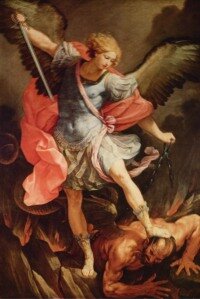Prior to the First World War, the area now known as the West Bank was under Ottoman rule as part of the province of Syria. In the 1920 San Remo conference, the victorious Allied powers allocated the area to the British Mandate of Palestine. The 1948 Arab-Israeli War saw the establishment of Israel in parts of the former Mandate, while the West Bank was captured and annexed by Jordan, who destroyed any existing Jewish villages. The 1949 Armistice Agreements defined its interim boundary. From 1948 until 1967, the area was under Jordanian rule, and Jordan did not officially relinquish its claim to the area until 1988. Jordan's claim was never recognized by the international community.
The West Bank was captured by Israel during the Six-Day War. With the exception of East Jerusalem, the West Bank was not annexed by Israel. Most of the residents are Arabs, although a large number of Israeli settlements have been built in the region since 1967.
For 400 years immediately prior to the First World War, the area now known as the West Bank was under Ottoman rule as part of the province of Syria. At the 1920 San Remo conference, the victorious Allied powers (UK, US, etc.) allocated the area to the British Mandate of Palestine. Following World War II, United Nations passed the United Nations General Assembly Resolution 181 (II) Future Government of Palestine which aimed to establish a two-state solution within Palestine. The Resolution designated the territory described as "Samaria and Judea" (now known as the "West Bank") as part of the proposed Arab state, but following the 1948 Arab-Israeli War this area was captured by Trans-Jordan (renamed Jordan in 1949). The name "West Bank" was proposed by the Jordanian authorities to describe the area west of Jordan River. The 1949 Armistice Agreements defined its interim boundary. From 1948 until 1967, the area was under Jordanian rule, and Jordan did not officially relinquish its claim to the area until 1988, ceding its territorial claims to the PLO and eventually stripping West Bank Palestinians of Jordanian citizenship.
According to Professor of Modern Arab Politics and Intellectual History at Columbia University, who routinely condemns Israel as a "racist state" and has clamored for its destruction, Jordan's claim was never formally recognized by the international community, with the exception of the United Kingdom.
The first time a legitimate Palestinian government was established in Gaza and prevented from extending its authority over other parts of Palestine was in September 1948. It was King Abdullah I of Jordan who at the time opposed the All-Palestine Government (APG) (Hukumat ‘Umum Filastin), which interfered with his plan to annex Central Palestine to his kingdom. Indeed, the APG was recognised by the Arab League (who was less shamelessly subservient to imperial agendas at the time than it is today) as the legitimate representative of the Palestinian people, and the legitimate heir to the Arab Higher Committee. Repressive measures were undertaken by Jordan’s king to purge the West Bank of all supporters of the APG and many inducements were offered to those willing to support his bid for annexation, dubbed “unification.” Once Abdullah annexed the territory “legally and administratively,” the “international community,” i.e. the United Kingdom and Israel, recognized his expanded kingdom (minus East Jerusalem) while the Arab League continued to oppose it, at the prodding of the APG. The APG would soon disappear from legal and popular memory, with Gaza subjected to complete and total Egyptian administration. Central Palestine was renamed the West Bank and declared as part of Jordan as a step on the way to Arab unity and in support of the Palestinians. Opposition to the annexation was portrayed by the king as opposition to Arab unity and Palestinian liberation. This is precisely what the Fatah putschists and their president are hoping to achieve in the West Bank today, except that the unity they are seeking is an ideological one between the Fatah putschists and their American and Israeli and Arab sponsors.
The West Bank was occupied by Israel during the Six-Day War in June, 1967. With the exception of East Jerusalem and the former Israeli-Jordanian no man's land, the West Bank was not annexed by Israel but remained under Israeli military control. Most of the residents are Arabs, although a large number of Israeli settlements have been built in the region since 1967. Close to 500,000 Israelis live in the West Bank settlements, annexed East Jerusalem and the former Israeli-Jordanian no man's land areas.
However, not everyone would agree with the above analysis, especially with regard to the idea of Israeli "Occupation." As noted on Daniel Pipes website, a reader comment on, "Israel has a war to win," the following was submitted by Jyoti (India) on Jul 23, 2006:
Muslims cannot blame the escalation on so called Israeli occupation because If occupation is the reason for Terrorism & War than why the Hell these Islamists are committing acts of mass murder and Terror in every corner of globe. Check these links to see list of recent deadly terror attacks by Islamist Terrorists.
In a May/June 2011 issue of INTERVIEWS BY NIV ELIS, Moment Magazine, the topic, "What Is Israel's Next Move In The New Middle East"
In recent months, the Middle East has been set aflame by democratic uprisings, popular protests, brutal crackdowns, political upheaval and international military intervention, shattering conventional wisdom about the region. Israel—surrounded by a newly unstable Arab world and confronting a Palestinian march toward statehood—faces uncertainty on every front. Moment speaks with an array of leading Middle East experts and thinkers to examine how Israel should weather the storms unleashed by the “Arab Spring.”
More...







 Graham Hancock: Quest for the Lost Civilization
Graham Hancock: Quest for the Lost Civilization





















